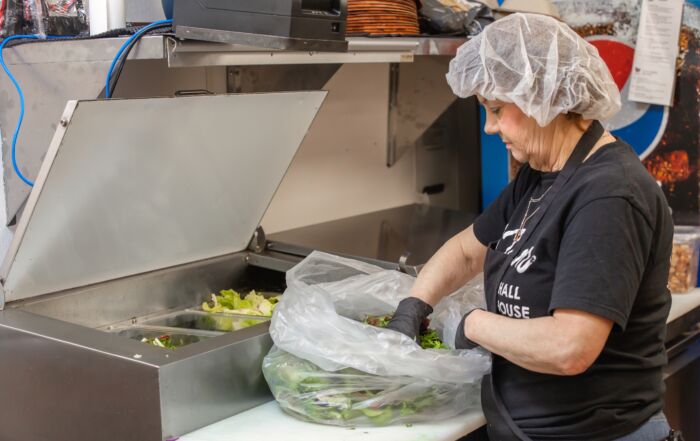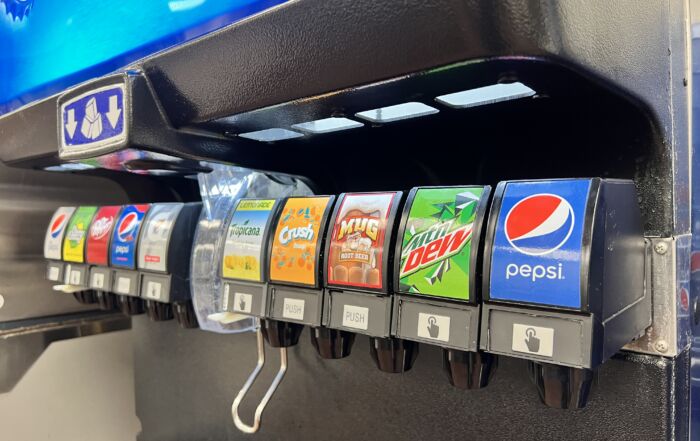Food Defense—What is Your Game Plan?
We are into the season of Friday Night Lights and for many of you, this is a time when offensive and defensive strategies are discussed and rehashed during Monday morning quarterbacking sessions. Most of you working in foodservices have your “offensive” game under control with menu item and service strategies to ensure customer satisfaction–a big part of your play book. But, how is your “defensive” game? Do you have procedures in place to protect food from intentional contamination? In this blog, we will cover some background on food defense and discuss whether it really is a necessary strategy. In the second posting for this month, action steps for operations to consider will be presented.
Is food defense important? Well, before September 11th, 2001 we really never gave it a thought. Any defensive measures taken were more for protection of food inventory from theft, spoilage, and unintentional contamination of food. But after the terrorist attack on American soil, there was increased recognition of potential vulnerabilities with our food and water supplies. New regulations went into effect with passage of the Bio-Security Act of 2002, which required the “one-step forward and one-step back” traceability along the food chain. That is why foodservice operations need to be able to trace back a specific food order to a particular vendor, who in turn should be able to go back one step to their source of that ingredient, and so on and so on and so on. With some food products having multiple steps from production to service sites, good record keeping is important! Traceability is helpful in case there is a foodborne illness outbreak or a recall of a product due to post-distribution awareness of a processing glitch.
Before 9/11, experts considered the U.S. food industry to be a soft target, meaning it was vulnerable to acts of intentional contamination with chemical or biological weapons. In 2008, the World Health Organization urged its Member States to recognize the potential for food to be deliberately contaminated, and to strengthen food production, processing, and preparation systems. The existence of a global food system means an attack contaminating a large batch of a food product or an ingredient has the potential to affect a large number of people in many different places.
Country of Origin Labeling (COOL) labeling requirements have been debated for a while. You have seen site of production on labels of fresh fruits and vegetables for several years. While COOL has provided consumers with information and helped to answer the question of “do you know where your food comes from?”, it has been a political hot potato for animal foods with our trade partners and the impacts on production and processing costs (with costs passed along to consumers, including foodservices) often significant. Other food defense regulations pertain to ownership of food companies, a contentious point when Smithfield Foods majority ownership was acquired by a Chinese corporation. The Food Safety Modernization Act Final Rule for Mitigation Strategies to Protect Food Against Intentional Adulteration, released in May 2016, provides guidance to the food industry.
Have there been any attacks through food or water?
Sadly, yes there have been documented instances here in the United States of groups or cults purposefully contaminating salad bars, and disgruntled employees or ex-employees adding broken glass and other physical hazards to batches of product. An analysis* of 365 confirmed incidents of malicious food contamination across the globe showed the majority occurred in the home or at work, and were perpetrated by relatives, co-workers, and/or acquaintances of the victims. However, of these incidents, 23.3% (n = 85) occurred in retail foodservice venues and contributed the highest average number of casualties (n = 39) per incident. In the former instance involving a cult group, there was a deliberative plan to target the salad bars at multiple restaurants and schools with salmonella bacteria. They were successful to a point! Fortunately in the school setting, one of the cult members admitted she was unable to contaminate the food because of the peer oversight. Her quote: “Those ladies were really watching me”!
Why would there be intentional contamination of food or water supplies?
The primary motivation behind any type of terrorist attack is disruption of social life causing physical, psychological, or economic damage. Disgruntled employees, criminals, and individuals holding a grudge are in a position to intentionally contaminate the food in the work place – a case of “I’ll show them!” A 2010 survey of 926 restaurant managers in South Carolina** found that managers reported 29 alleged food tampering incidents in their restaurants, with dissatisfied or terminated employees as probable perpetrators in 16 of the incidents. Three intentional contamination acts reported in schools were initiated by students angry at a teacher or other students. Two of the acts involved rat poison, and one involved mercury from a broken thermometer.
So, yes, it could happen! And it doesn’t require any exotic substances as many commonly available chemicals in foodservice can cause harm if ingested. Now the question is, do you have plans in place to prevent or identify an intentional contamination? Next time we will review what actions you can put into play to up your defensive game, and protect your customers and employees from food that is intentionally contaminated. Risk nothing!
*Dalziel, G. R. (2009). Food defence incidents 1950-2008: A chronology and analysis of incidents involving the malicious contamination of the food supply chain. Retrieved from S. Rajaratnam School of International Studies: Nanyang Technological University website: http://www.rsis.edu.sg/cens/publications/reports/RSIS_Food%20Defence_170209.pdf
** Xirasagar, S., Kanwat, C. P., Smith, L. U., Li, Y.J., Sros, L., & Shewchuk, R. M. (2010). Restaurant industry preparedness against intentional food contamination: Results of a South Carolina survey. Journal of Public Health Management and Practice,16(4), E18-E30. http://www.lww.com/webapp/wcs/stores/servlet/product__11851_-1_9012052_Prod-10784659
Safely Shopping at Farmers’ Markets: A Food Safety Guide for Foodservice Operators and Chefs
Farmers’ markets are an appealing source of fresh, local, and seasonal ingredients for individuals and [...]
Ice Machines, Beverage Dispensers & Other Overlooked Food Safety Hazards
At the end of the spring semester in our campus food production lab, we’re fortunate [...]
What Foodservice Professionals Need to Know about the FDA Milk Testing Changes
In late-April and early-May 2025, headlines across the country and several social media posts stirred [...]
Before They Arrive: Your Health Inspection Prep List
A few weeks ago, I welcomed our local health inspector into a class I was [...]











